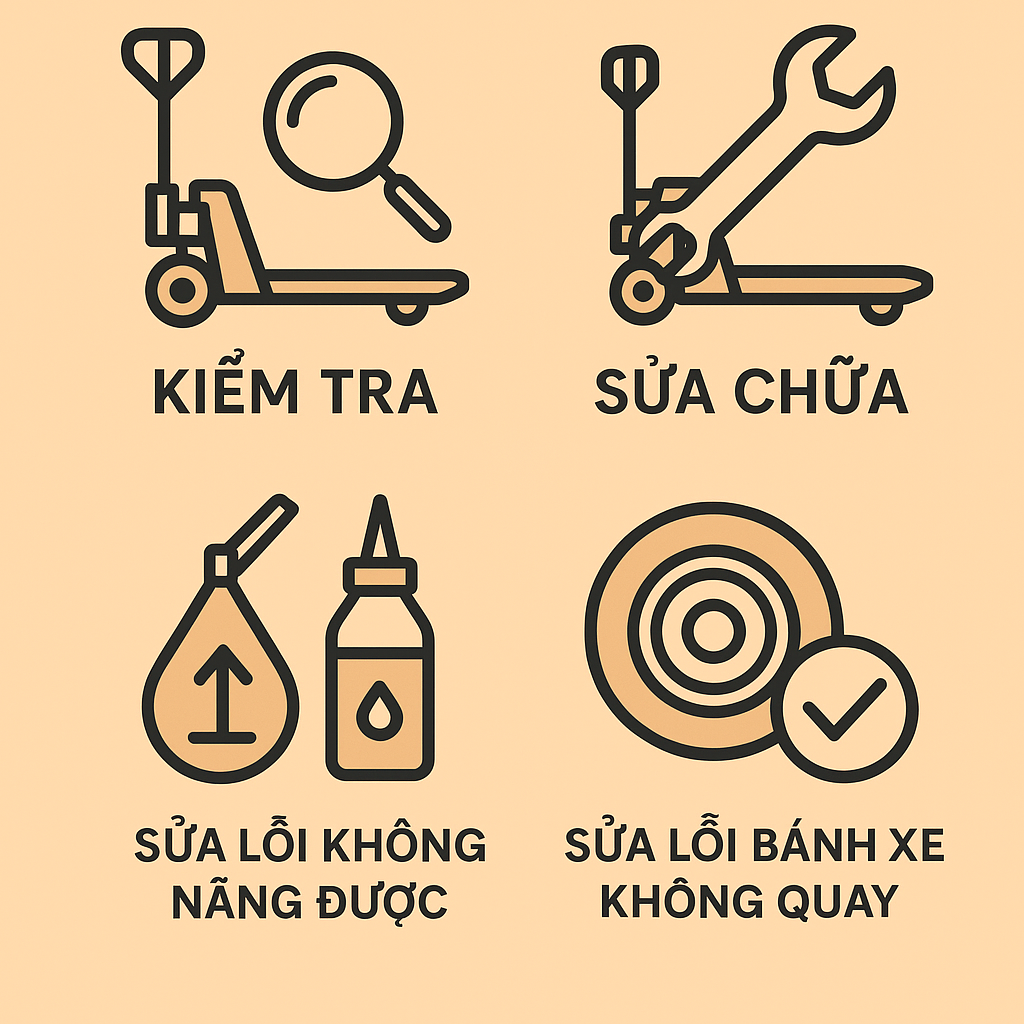How to Inspect and Repair a Broken Hand Pallet Truck
To inspect and repair a broken hand pallet truck, follow the step-by-step process below:
✅ 1. CHECK THE HAND PALLET TRUCK
🔧 A. External Inspection:
-
Forks: Bent, broken, worn, or rusty?
-
Wheels: Worn, stuck, broken bearings, or misaligned?
-
Pump handle: Bent, broken, stuck, or non-functional?
-
Hydraulic cylinder: Any oil leakage?
🔧 B. Functional Inspection:
-
Not lifting load → May be due to low oil, damaged seals, or blocked valve.
-
Slow lift or cannot hold load → Oil leak, faulty release valve, or seal damage.
-
Cannot lower → Stuck release valve or broken return spring.
-
Wheels not rolling → Debris or broken bearings.
✅ 2. REPAIRING THE PALLET TRUCK
🛠 A. Fixing the lifting issue:
-
Add hydraulic oil:
-
Use standard hydraulic oil (e.g., ISO VG32 or VG46).
-
Open the oil cap and fill to 70-80% capacity.
-
-
Bleed the system:
-
Pull the release lever and pump up and down to remove air bubbles.
-
-
Replace hydraulic seals if leaking or losing pressure:
-
Disassemble the cylinder and replace the internal rubber seals.
-
Requires tools and technical knowledge.
-
🛠 B. Fixing the lowering issue:
-
Check the release lever: Is it stuck? Is the return spring broken?
-
Apply anti-rust spray (e.g., WD-40) to moving parts.
-
If still stuck → Clean and replace the spring.
🛠 C. Fixing the wheel issue:
-
Remove wheels and inspect bearings.
-
Clean debris and dirt.
-
Replace wheels if worn or cracked (replace in pairs).
✅ 3. REGULAR MAINTENANCE
| Task | Frequency |
|---|---|
| Add hydraulic oil | Every 3–6 months |
| Inspect seals | Every 6 months |
| Grease wheels | Every 1–3 months |
| Clean the truck | Weekly |
| Check for oil leaks | Monthly |
✅ 4. REQUIRED TOOLS
-
Allen key set, wrenches
-
Pliers, screwdrivers
-
Grease, hydraulic oil
-
Spare seal kits
-
Tire patching tools (if needed)
📌 Safety Notes:
-
Always release pressure before disassembling the cylinder.
-
Keep the truck on a level surface; use wheel chocks if needed.
-
Wear gloves and safety goggles during maintenance.



